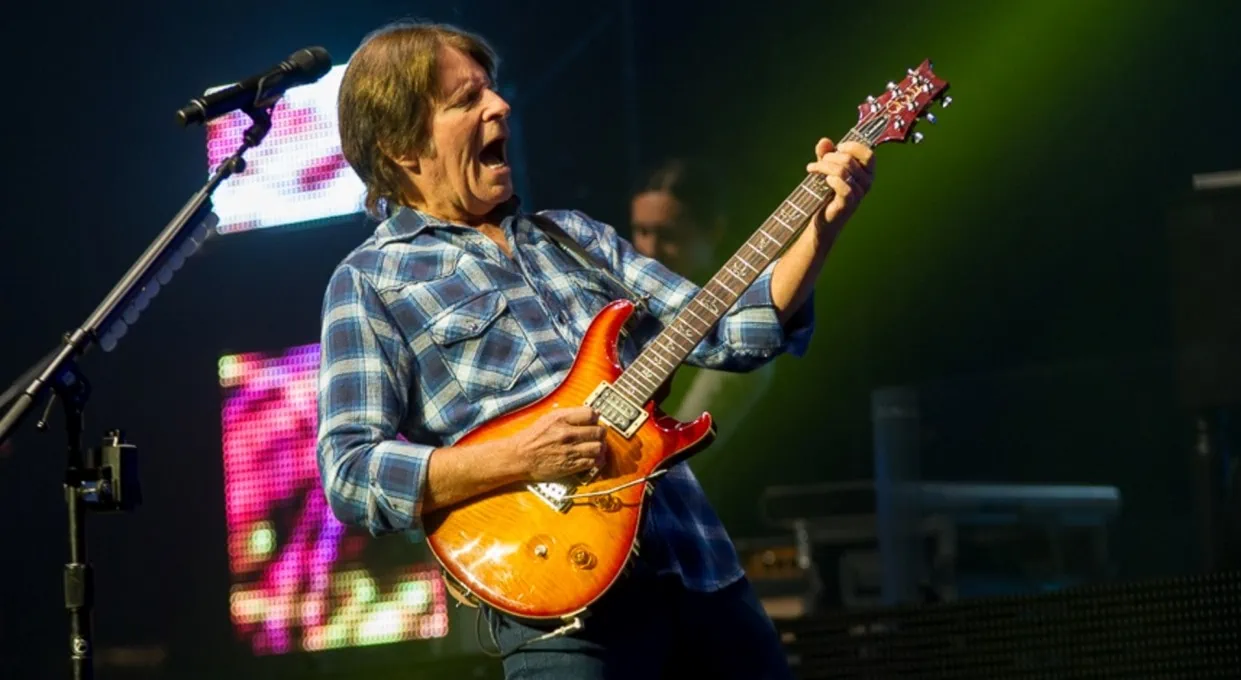Creedence Clearwater Revival, fronted by guitarist, singer, and chief songwriter John Fogerty, are one of the most beloved acts of the 20th century.
Almost 60 years after Creedence burst onto the scene, the iconic opening strains of “Fortunate Son” adorn countless movie soundtracks. Cover bands the world over rip through raucous versions of “Proud Mary” and “Bad Moon Rising.”
An invaluable piece of the Creedence sound was John Fogerty’s raw, unrefined guitar tone. heavily influenced by the clean, precise sounds of classic country and Americana. Fogerty’s guitar tone stands unique among many of the classic American rock and roll sounds for its piercing clarity and immediately identifiable pick attack.
In this article, I’m going to run you through the key pieces of gear you need to capture the magic and ferocity of the iconic Creedence sound.
I’ve based the below recommendations on two of John Fogerty’s most iconic guitar parts: the uptempo rhythm of “Bad Moon Rising” and the relentless, driving riff of “Fortunate Son”.
Table of Contents
Creedence Guitars
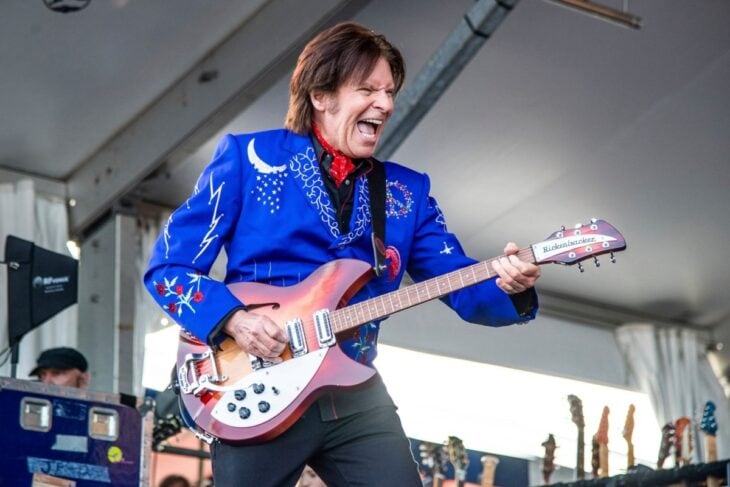
John Fogerty famously used a Rickenbacker 325 semi-hollow as his main guitar through the Creedence Clearwater Revival glory days.
The Rickenbacker was Fogerty’s main concert and recording guitar, but over the years he has been known to use various Les Pauls, Telecasters, Stratocasters, and even a Van Halen-style Ernie Ball Musicman Axis.
The Rickenbacker 325 is a key piece of this tonal puzzle, as Fogerty saw himself as the heir to John Lennon’s songwriting legacy. It also offered him the chance to pay tribute to his country-picking hero Chet Atkins.
In lieu of a Rickenbacker, when I picture Creedence, I picture John Fogerty wielding a gold top Les Paul fitted with P-90 pickups.
In my opinion, particularly in the live setting, the choice of pickups for this guitar is more important than the type of guitar.
P-90s have a very particular, aggressive tone that, when played through the right amplifier on the edge of breakup, offers unparalleled note definition and pick attack.
For this guitar sound, I would recommend a Les Paul with P-90 pickups, an SG Special, or an Epiphone Casino.
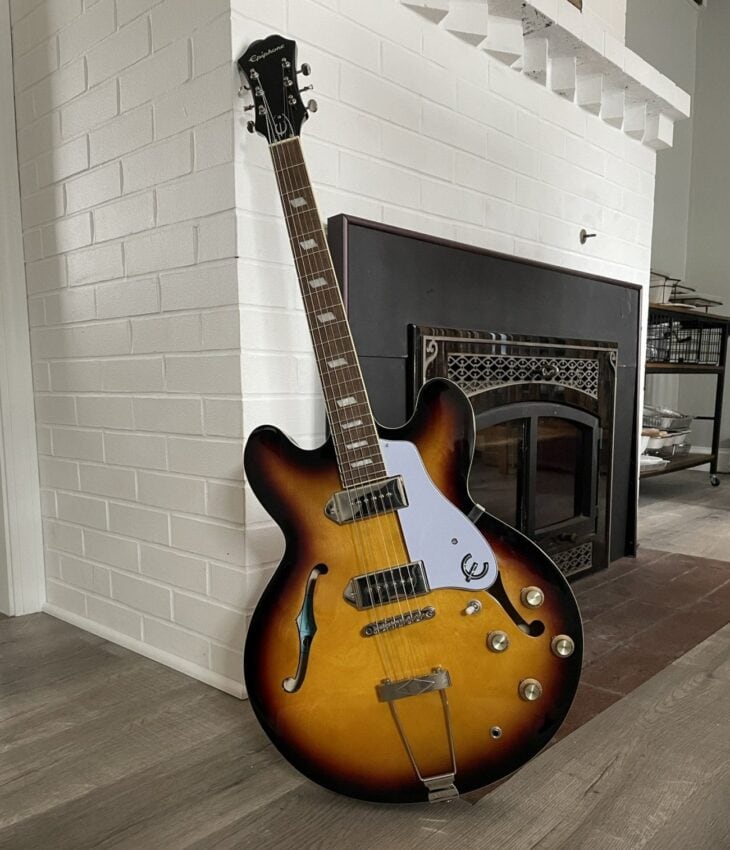
P-90 pickups might look like a bar of soap, but their sound doesn’t have to be clean. Most guitar players describe the P-90 tone as precisely halfway between the grunt and warmth of a humbucker and the crisp, clear sound of a single coil.
I believe that John Fogerty’s preference for the P-90 allowed him to get the power of a Gibson guitar with some of the note definition and treble-heaviness of classic country playing.
Just as important as what John Fogerty played is how he played. The Creedence frontman frequently tuned his guitars down a full step, which offered more string resonance in his sound.
I typically find best results for that biting, driving tone by picking closer to the bridge of the guitar than to the neck. You’ll need to consciously move your right hand and adjust your right-hand technique, particularly focusing on the amount of picking attack and the angle with which you strike the strings, to really nail the country rock sound.
The right amplifier, however, will make this process much easier.
Creedence Amps
John Fogerty, like many great country players, preferred the high definition and high headroom of a classic Fender amplifier.
During the Creedence heyday of the 1960s, Fogerty heavily used the Fender Tweed Deluxe.
John Fogerty was also a loyal user of Kustom amplifiers, and these days often uses the Dr Z Z-Wreck amp head live.
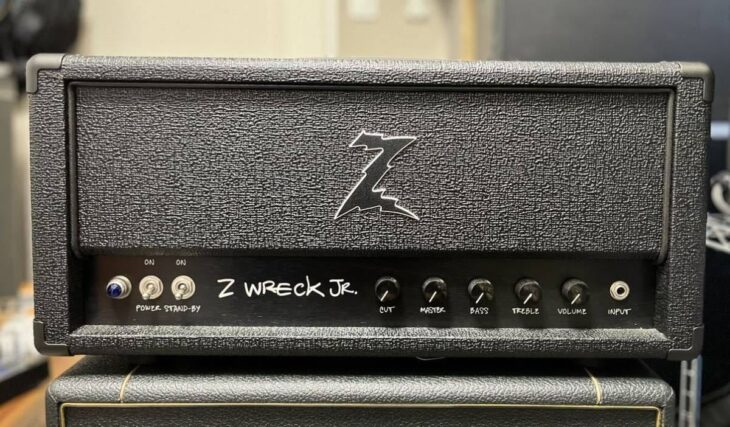
Fortunately, you don’t need John Fogerty’s amplifier budget to get the John Fogerty tone.
I strongly recommend Fender combo amps for this sound. A Fender Blues Deluxe or a Twin Reverb can easily handle these tones.
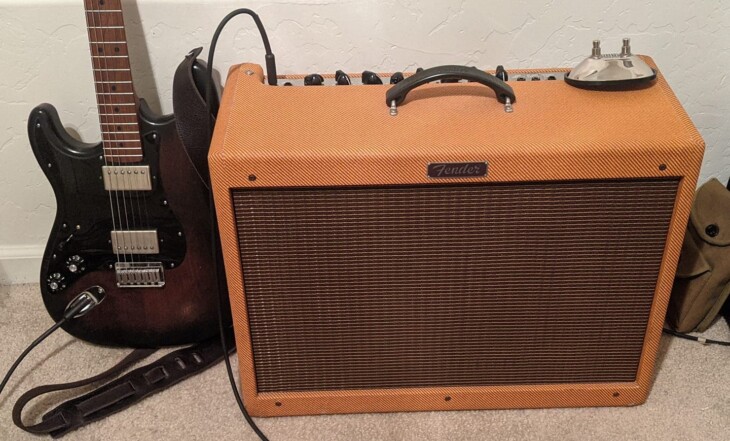
It’s up to you whether to go for a single 12-inch speaker or the classic Fender 2×12 setup.
I would recommend, however, that most guitar players who are playing primarily at home, in rehearsal rooms, or in bar- and club-size venues, that a single 12-inch speaker, especially when miced up and run through a PA, is more than enough.
Creedence Amp Settings
These amplifier settings can be used to capture both the crisp, clean intro sound from “Bad Moon Rising” and the slightly more gritty overdriven tone from “Fortunate Son”.
Volume: 7
Fender amplifiers offer plenty of clean headroom so you can afford to crank the amp up to seven and get warm tube “sag” without the tone distorting too much, if at all.
Bass: 4
This is not an overly warm sound. Fogerty drew heavily from the trebly, clean country tradition and left the low end to the bass player.
Mids: 7
You need a healthy amount of midrange for this sound to help give the guitar definition and shape.
Treble: 7
If you listen carefully to the intro to “Fortunate Son” you can hear Fogerty’s pick striking the strings. This comes mostly from the amount of treble in the EQ.
John Fogerty / Creedence Pedals
John Fogerty did his most recognizable work with Creedence Clearwater Revival in the days before guitar pedals were widespread.
It’s hard to picture now, but in the early days of electric guitar, very few players used any effects units whatsoever. Those that were available were very expensive, very large, and generally only available in professional studios.
It wasn’t until the 1970s that relatively portable units such as the Dallas Rangemaster or the Echoplex became fixtures of touring bands. Even these tended to be too unwieldy for the average guitar player.
However, modern players looking to emulate the Creedence sound may find the use of certain pedals highly beneficial. Certainly, John Fogerty has embraced the use of pedalboards in the modern era.
One key component of this sound is compression. John Fogerty is very fond of the Keeley compressor, which is my all-time favorite compression effect.

You’ll often hear a subtle tremolo effect on Creedence guitar tracks. These days, Fogerty uses the Fulltone Super Trem. I would recommend the smaller, more affordable EHX Nano Pulsar.
Dirtying up a Fender amp to achieve the crisp edge-of-breakup tone from “Fortunate Son” used to require running the amp at maximum volume and letting the tubes run so hot that you could smell them cooking.
However, modern dirt pedals offer an excellent alternative that won’t fry your amp. John Fogerty actually used a fuzz circuit built into his custom amp to get many of his dirty tones, particularly for lead work.
To replicate this sound live, John Fogerty often used vintage Russian Electro-Harmonix Big Muff pedals. I would recommend the Big Muff Pi Nano for its portability and high fidelity to the original Bif Muff sound.
Final Word
Although most of the Creedence Clearwater Revival tone comes from John Fogerty’s fingers, note choices, and picking technique, it’s much easier to get in the ballpark of his tone when you have the right gear.
For this sound, it’s critical to have either a Rickenbacker-style guitar with plenty of jangle and treble, or a p90 equipped Les Paul, SG, or Casino. With the right guitar, a Fender amplifier, and a few well-chosen effects you’ll be ready to “Run Through the Jungle” chasing down the Creedence tone.

